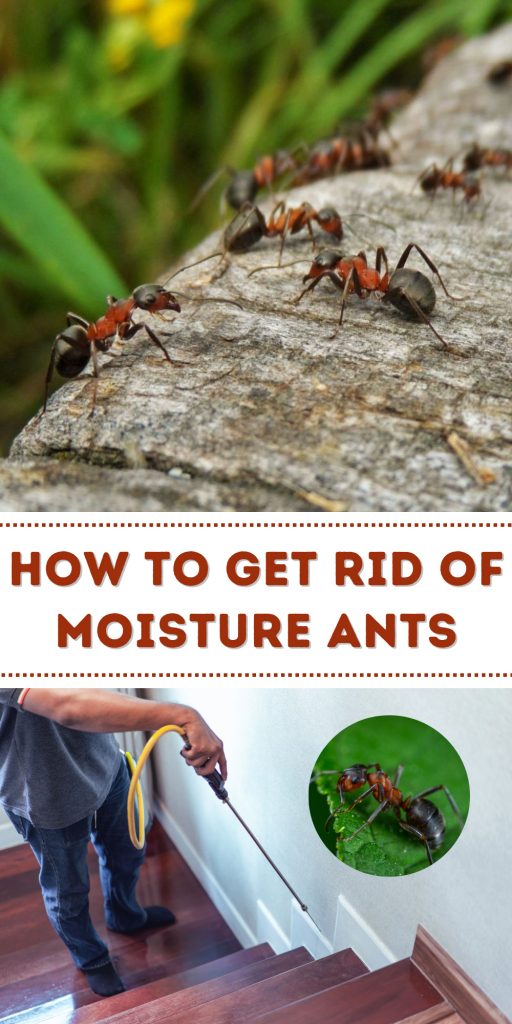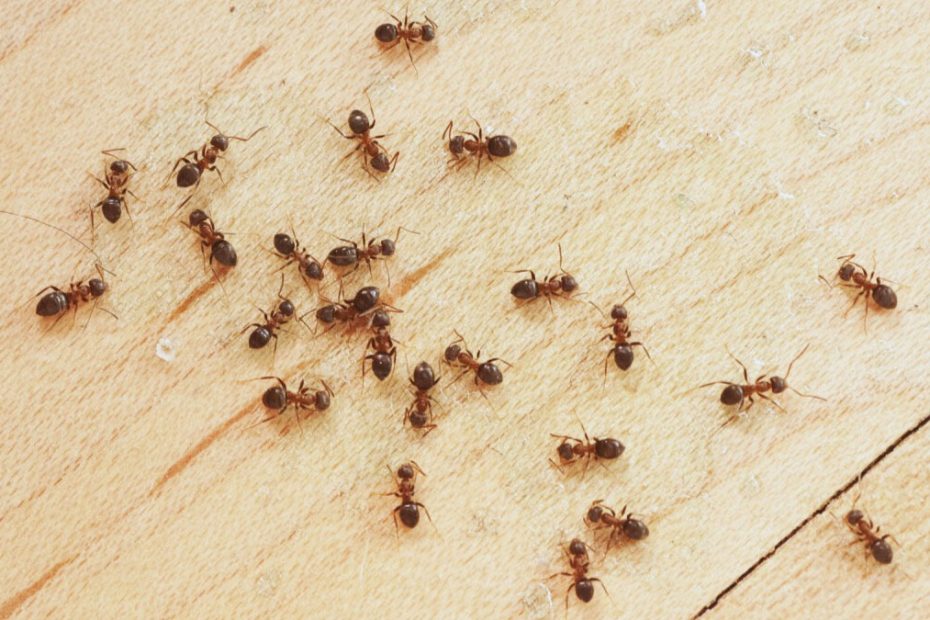Moisture ants can be a pesky problem, especially if you live in a humid area. These tiny invaders thrive in damp environments, often making their way into your home and causing damage to wood and insulation. But don’t worry, you can tackle this issue head-on with a few strategic steps.
Understanding what attracts moisture ants is crucial for effective eradication. They’re drawn to areas with high humidity, leaks, or standing water. By addressing these conditions and using targeted treatments, you can reclaim your space and keep these unwelcome guests at bay. Ready to take control? Let’s jump into how you can get rid of moisture ants for good.
Key Takeaways
- Understand Moisture Ants: Learn their physical characteristics, such as small size and dark color, and behavioral patterns like attraction to high humidity and water sources.
- Identify Infestations: Look for visible trails, damaged wood, and areas with excess moisture to detect potential infestations.
- Prevention Methods: Maintain dry environments, ensure proper food storage, and seal entry points to prevent moisture ants from invading your home.
- Natural Remedies: Use vinegar solutions, essential oils, and diatomaceous earth as effective, chemical-free options to deter and eliminate moisture ants.
- Chemical Treatments: Employ ant baits and insecticides for more severe infestations, and consider professional pest control services if necessary.
- Long-term Solutions: Implement strategies like consistent home repairs, sealing entry points, and making landscaping adjustments to reduce the likelihood of future infestations.

Understanding Moisture Ants
Moisture ants thrive in damp environments, often causing damage to wooden structures and insulation. Recognizing their characteristics and habitats can help in effectively dealing with infestations.
What Are Moisture Ants?
Moisture ants, classified under the genus Lasius, prefer moist, decayed wood for nesting. They usually have:
- Physical Characteristics: Small size (about 1/8 inch), black or dark brown color, segmented body with a distinct waist.
- Behavioral Patterns: Attracted to high humidity, often found near water sources, slow movement compared to other ant species.
Identifying Moisture Ant Infestations
Detecting moisture ants involves looking for specific signs. Common indicators include:
- Visible Trails: Ants moving in lines, usually leading to a moisture source.
- Damaged Wood: Presence of frass (sawdust-like material) indicating ant activity inside wood.
- Excess Moisture: Areas with leaks or standing water may attract moisture ants.
Inspect areas such as basements, kitchens, and bathrooms where water intrusion is likely.
Common Habitats
Moisture ants nest in damp locations. Typical habitats include:
- Indoor Locations: Near plumbing leaks, under sinks, around bathtubs, and inside wall voids with moisture damage.
- Outdoor Locations: Under mulch, in decaying logs, around garden beds with excessive watering, and under stones.
By understanding the nature, identification, and habitats of moisture ants, you can take proactive measures to eliminate them and prevent future infestations.
Prevention Methods
To prevent moisture ants from invading your home, it’s crucial to address the factors that attract them. Focus on maintaining dry environments, proper food storage, and regular home inspections.
Maintaining Dry Environments
Moisture ants thrive in humid conditions. Ensure your home stays dry using these strategies:
- Fix Leaks: Repair leaky pipes, faucets, and roofs promptly to prevent excess moisture.
- Improve Ventilation: Use fans and dehumidifiers to reduce humidity in basements, bathrooms, and kitchens.
- Proper Drainage: Ensure water drains away from your foundation. Clean gutters and downspouts regularly.
- Seal Entry Points: Fill cracks and gaps in walls, windows, and foundations to block ant entry.
Proper Food Storage
Proper food storage is essential to deter moisture ants:
- Airtight Containers: Store food in sealed containers to eliminate scents that attract ants.
- Clean Surfaces: Wipe down countertops, tables, and appliances regularly to remove food residues.
- Dispose of Trash: Empty trash bins frequently and use bins with tight-fitting lids.
- Pet Food: Store pet food in airtight containers and clean feeding areas regularly.
- Check Moisture Levels: Use a moisture meter to monitor humidity, especially in susceptible areas like basements and attics.
- Inspect Woodwork: Examine wooden structures for signs of damage or decay.
- Monitor Entry Points: Regularly check windows, doors, and foundations for gaps or cracks.
- Consult Professionals: Schedule periodic inspections with pest control experts for a thorough assessment.
Natural Remedies
Natural remedies offer effective ways to eliminate moisture ants without harmful chemicals. These approaches harness the power of everyday substances.
Vinegar Solutions
Vinegar disrupts ant trails, making it a potent remedy. Its acidic properties deter ants and can erase the scent trails they follow.
Steps to Use Vinegar Solutions:
- Mixing: Combine equal parts white vinegar and water.
- Application: Spray the solution directly on ant trails, nests, and entry points.
- Frequency: Repeat daily until ant activity ceases.
Essential Oils
Essential oils, with their strong scents, act as natural ant repellents. Oils like peppermint, tea tree, and lemon are particularly effective.
Steps to Use Essential Oils:
- Preparation: Mix 10 drops of essential oil with 2 cups of water.
- Application: Spray the mixture on ant trails, around windows, and near doors.
- Reapplication: Reapply every few days or after cleaning the treated areas.
Diatomaceous Earth
Diatomaceous earth (DE) is a natural powder derived from fossilized algae. It kills ants by dehydrating them and is safe for home use.
- Safety: Use food-grade DE to ensure it’s safe for indoor use.
- Application: Sprinkle a thin layer around entry points, along ant trails, and near nests.
- Reapplication: Refresh the layer after cleaning or if it gets wet.
Using natural remedies like vinegar solutions, essential oils, and diatomaceous earth can help you manage moisture ants effectively while minimizing the use of harsh chemicals. Make these methods part of your routine to keep your home ant-free.
Chemical Treatments
Chemical treatments offer an effective method for eliminating moisture ants, especially when natural remedies are insufficient. Combining these treatments with proper home maintenance creates a robust strategy against ant infestations.
Ant Baits
Ant baits are crucial in targeting moisture ants. Here’s how:
- Identification: Identify high-traffic areas where you notice ant trails.
- Placement: Place ant baits near these trails and potential nesting sites.
- Active Ingredients: Use baits with active ingredients like borax or hydramethylnon, which ants carry back to their colony, poisoning it from within.
- Monitoring: Regularly check and replenish baits until ant activity ceases.
Insecticides
Insecticides provide immediate results for controlling moisture ants. Consider these points:
- Types: Insecticides come in sprays, dust, and liquid forms.
- Application: Apply sprays and dusts directly to nests and trails; use liquid insecticides to create barriers around entry points.
- Safety: Follow all safety instructions, wearing protective clothing during application.
- Effectiveness: Insecticides containing fipronil, cyfluthrin, or bifenthrin disrupt ant nervous systems, leading to their elimination.
Hiring Pest Control Services
Professional pest control services may be necessary for severe infestations. Here’s what to expect:
- Assessment: Experts will assess the extent of the infestation and identify nesting sites.
- Treatment Plan: They’ll develop a customized treatment plan, often combining baits and insecticides.
- Execution: Professionals will apply treatments precisely and efficiently, ensuring maximum effectiveness.
- Follow-up: Scheduled follow-ups ensure the complete eradication of moisture ants and prevent future infestations.
Employing these chemical treatments, along with maintaining a dry environment, effectively combats moisture ants and protects your home from further damage.
Long-term Solutions
Addressing moisture ants requires comprehensive, long-term strategies beyond immediate fixes. By combining home repairs, sealing entry points, and making landscaping adjustments, you can significantly reduce the likelihood of future infestations.
Home Repairs
Consistent, targeted home repairs help eliminate long-term risks associated with moisture ants.
Leaky Pipes and Faucets
- Inspect regularly for leaks.
- Replace damaged pipes and worn-out faucet seals.
Damaged Wood
- Remove and replace rotted or water-damaged wood.
- Treat exposed wood with a water-resistant sealant.
Ventilation Improvements
- Install exhaust fans in bathrooms and kitchens.
- Use dehumidifiers in basements and attics.
Foundation Cracks
- Seal cracks promptly with high-quality caulk or sealant.
- Consider professional foundation repairs if cracks persist.
Sealing Entry Points
Preventing access points keeps moisture ants from entering your home.
Doors and Windows
- Check and replace weather stripping.
- Ensure proper functionality of doors and windows.
Gaps in Walls
- Seal gaps around utility lines and pipes with caulk.
- Install mesh screens over vents and exhausts.
Basement and Crawl Spaces
- Use moisture barriers to cover floors and walls.
- Regularly inspect and maintain sealing around these areas.
Attic Spaces
- Seal openings around vents, chimneys, and skylights.
- Ensure that insulation provides both protection and moisture control.
Landscaping Adjustments
Landscaping adjustments around your home reduce outdoor habitats favorable to moisture ants.
Proper Drainage
- Ensure gutters and downspouts direct water away from the foundation.
- Grade the world to promote water runoff.
Mulching Practices
- Use mulch sparingly and keep it at least 12 inches away from the foundation.
- Consider using landscaping fabric under the mulch to reduce moisture buildup.
Plants and Trees
- Trim plants and trees back from the house to prevent moisture accumulation.
- Avoid overwatering garden beds and plants near the home.
- Remove decayed wood, leaves, and other organic debris.
- Store firewood away from the home’s foundation and elevate it off the ground.
Maintain vigilance and an integrated approach to prevent moisture ants effectively. Regular repairs, rigorous sealing practices, and mindful landscaping adjustments form the cornerstone of a long-term solution.
Conclusion
Effectively managing moisture ants requires a proactive and comprehensive approach. By addressing the root causes like high humidity and leaks, you can make your home less inviting to these pests. Incorporate preventive measures such as fixing leaks, improving ventilation, and sealing entry points to keep them at bay. Natural remedies like vinegar solutions and essential oils can help manage minor infestations, while chemical treatments and professional pest control services are valuable for more severe cases. Regular home inspections and maintenance are crucial for long-term solutions. By staying vigilant and employing these strategies, you can protect your home from moisture ants and ensure a healthier living environment.
Frequently Asked Questions
What attracts moisture ants to my home?
Moisture ants are attracted to high humidity, leaks, and standing water. They prefer nesting in moist, decayed wood and will seek out environments with these conditions.
How can I identify a moisture ant infestation?
Signs of a moisture ant infestation include visible ant trails, damaged wood with frass, and areas with excess moisture. Common locations include basements, kitchens, and outdoor areas like decaying logs.
What are the best ways to prevent moisture ants?
To prevent moisture ants, maintain dry environments, fix leaks, improve ventilation, ensure proper drainage, and seal entry points. Store food in airtight containers and clean surfaces regularly.
Are there natural remedies for eliminating moisture ants?
Yes, natural remedies include vinegar solutions, essential oils, and diatomaceous earth (DE). These methods can effectively manage moisture ants without using harsh chemicals.
When should I use chemical treatments for moisture ants?
Chemical treatments, such as ant baits and insecticides, are effective when natural remedies are insufficient. They should be used with safety precautions and are often best for severe infestations.
Should I hire a professional for severe moisture ant infestations?
Yes, for severe infestations, hiring a professional pest control service is advised. Professionals can assess the situation, create a customized treatment plan, and ensure effective execution and follow-up.
How can I implement long-term solutions for moisture ant prevention?
Long-term solutions involve home repairs, sealing entry points, and landscaping adjustments. Inspect for leaks, replace damaged wood, improve ventilation, and ensure proper drainage around your home.
What home repairs are necessary to prevent moisture ants?
Key repairs include fixing leaks, replacing damaged wood, improving ventilation, and sealing foundation cracks. These measures help reduce moisture levels and deny ants suitable habitats.
What landscaping adjustments help deter moisture ants?
Ensure proper drainage, manage mulch, and maintain plants around your home. These adjustments reduce outdoor habitats suitable for moisture ants and help prevent infestations.
